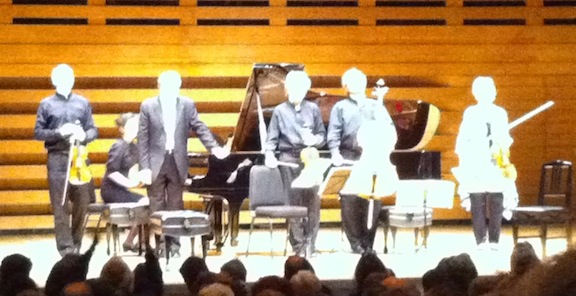
The Takács Quartet spoke softly but wielded a powerful emotional stick at a recital that also included pianist Marc-André Hamelin at Koerner Hall on Saturday evening. It made for one of the most satisfying chamber-music experiences of the year.
The Takács — violinists Edward Dusinberre and Károly Schranz, violist Geraldine Walther and cellist András Frejér — demonstrated all of the many reasons why it is one of the foremost chamber ensembles on the planet in a programme that paired a work from the 19th century canon with two great works of the mid-20th century.
Although this might seem like a lopsided programme, it was a great way to show how three very different composers achieved great things with economical means. There wasn’t an extraneous note in any of these three pieces.
The Quartet itself reflected this trait by almost underplaying the bulk of the programme, showing a near-capacity audience how restraint and discretion are not antithetical to conveying deep emotion in music.
Franz Schubert’s String Quartet No. 13, D804, — the “Rosamunde” Quartet — was treated with uncommon delicacy, gently laying out the composer’s ideas with utter clarity — a clarity and balance that would return again and again in the evening’s performances.
Schubert’s constant passages from major to minor, part of what makes his music so interesting, were seamless, unobtrusive.
The other string quartet on the programme was Benjamin Britten’s first, from 1941, premiered in Los Angeles while the anti-war composer and his partner, tenor Peter Pears, were trying to stay out of the way of World War II.
The opening movement, which starts with a delicate, plucked cello melody overlaid with ethereal, sustained high notes from the other three players, was magical, the slow Andante movement a study in how quietly a quartet can play while still conveying intensity.
Where Britten’s music conveys its intensity behind a veil of polite distance, Dmitri Shostakovich’s compositions wear their message on their sleeve.
The most exceptional performance of the evening was of the Russian composer’s 1940 Piano Quintet, interpreted with the help of Marc-André Hamelin in his Koerner Hall début.
The Piano Quintet is a 20th century classic, loved by performers and audiences alike. But it rarely gets played like this.
Hamelin and the Takács have Shostakovich’s music slightly rounded edges without ever diminishing its alternation of quiet elegy with dance-like energy. Even the loudest passages were played with uncommon elegance by everyone on stage, showing us how Shostakovich’s writing can have a lot of impact while also sounding nothing short of beautiful.
The five performers could have played the whole work over again, and we all would have happily stayed late to savour the experience.
John Terauds